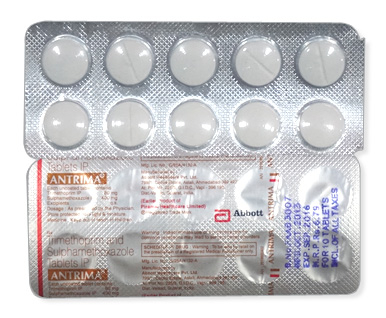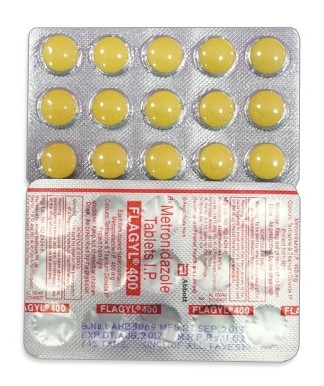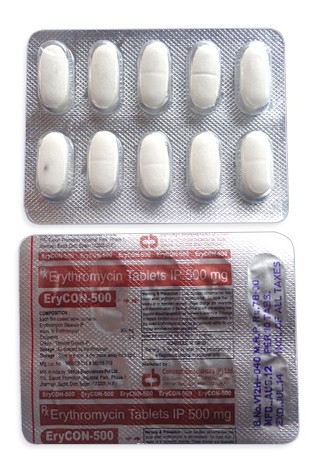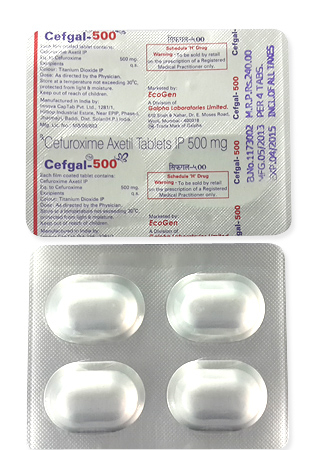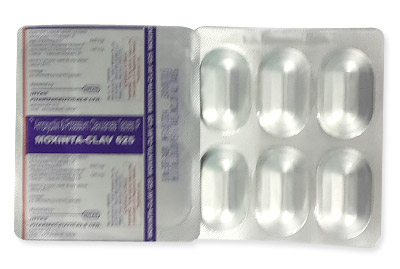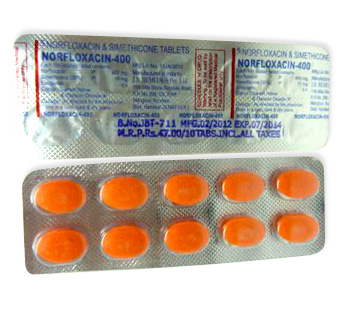Ampicillin
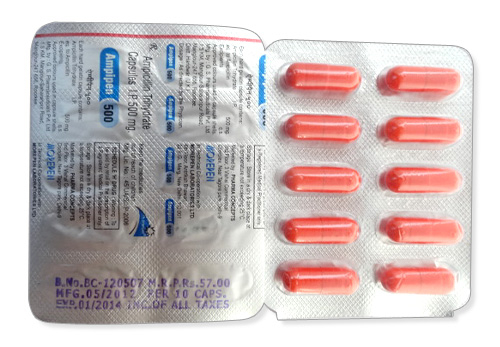
Ampicillin
- Ampicillin requires a prescription and is available globally under various brand names (e.g., Penbritin, Principen) through pharmacies and authorised suppliers, with delivery options and discreet packaging.
- Ampicillin is an extended-spectrum penicillin antibiotic used to treat bacterial infections such as respiratory or urinary tract infections, sepsis, and gonorrhea. It works by inhibiting bacterial cell wall synthesis.
- The usual adult dose is 250-500mg orally every 6 hours for mild infections and 1-2g intravenously every 4-6 hours for severe infections. Children’s doses range from 50-100mg/kg/day, adjusted by weight.
- Forms of administration include oral (capsules, tablets, suspension) and injectable routes (intravenous or intramuscular).
- Onset of action occurs within 1-2 hours after oral administration; intravenous administration provides immediate effects.
- Duration of action per dose is 4-6 hours, requiring multiple daily doses; typical treatment lasts 5-14 days depending on infection severity.
- Alcohol should be strictly avoided, as it may reduce antibiotic effectiveness and worsen side effects like gastrointestinal distress.
- Most common side effects include nausea, diarrhea, vomiting, and skin rash (mild to moderate).
- Would you like to try Ampicillin with a prescription?
Basic Ampicillin Information
| Aspect | Details |
|---|---|
| International Nonproprietary Name (INN) | Ampicillin |
| Common Australian Brand Names | Penbritin, generics |
| ATC Code | J01CA01 |
| Pharmaceutical Forms | Capsules (250mg, 500mg), IV powder (0.5g, 1g, 2g) |
| Australian Manufacturers | Sandoz, Pfizer, generics |
| TGA Registration Status | Approved |
| Classification | Prescription Only (Rx) |
Ampicillin remains a cornerstone antibiotic medication available across Australia for treating bacterial infections under prescription. This beta-lactam penicillin variant is sold under brands like Penbritin along with several generics. Medications containing ampicillin come in capsule form for oral use and as sterile powder for hospital intravenous preparation. Both Sandoz and Pfizer are key suppliers in the Australian pharmaceutical market. Every formulation carrying this prescription antibiotic has undergone strict evaluation by the Therapeutic Goods Administration, ensuring all medications meet Australia's safety standards. Patients need a valid prescription from their doctor to access this antibiotic through pharmacies. Its continued TGA registration reflects its established role in Australian infection management protocols.
Pharmacology Explained
Ampicillin combats bacteria by disrupting their protective cell walls during growth phases. This mechanism of action categorizes it as a beta-lactam antibiotic that weakens bacterial defenses until they rupture. Once taken orally, effects typically begin within 1-2 hours as the medication reaches therapeutic blood levels. The kidneys handle primary elimination, making this medication particularly important for patients with kidney conditions to discuss dosing adjustments.
Understanding medication interactions helps ensure safe treatment. Key considerations include:
- Avoid combining with tetracyclines as they may reduce ampicillin's effectiveness
- Concurrent use with allopurinol increases potential rash development
- Alcohol can intensify stomach discomfort during treatment
Since the kidneys remove ampicillin from the body, any impairment requires dosage modifications following medical advice. This pathway also explains why the medication is generally avoided with certain other kidney-processed drugs.
Approved Uses And Off Label Applications
Approved Uses
Therapeutic Goods Administration approvals for ampicillin cover specific bacterial infections confirmed through clinical evidence. Primarily, this prescription antibiotic treats urinary tract infections caused by susceptible E. coli strains. It's also clinically indicated for respiratory conditions like bronchitis and pneumonia when prescribed by Australian healthcare providers. Importantly, ampicillin remains part of combination protocols for certain meningitis cases pending culture results.
Off Label Applications
Beyond official approvals, Australian clinicians sometimes prescribe ampicillin for situations not explicitly covered in TGA documentation but supported by medical literature. These off-label uses include pelvic inflammatory disease management as part of combination therapy. Such prescribing follows evidence-based guidelines when alternative options present limitations.
Special Populations
Pregnancy considerations place ampicillin in Category B1, indicating extensive observational data shows no increased fetal risk compared to non-exposed pregnancies. Pediatric use requires careful calculation - day-care center ear infections might warrant 100mg/kg/day divided every 6 hours, exact dosing depends on body weight and infection severity. Elderly patients typically receive standard adult dosing unless kidney function decline requires supervision and adjustment by their treatment team.
Dosage Guide By Age And Condition
| Patient Group | Dosage Guidance | Frequency |
|---|---|---|
| Adults with respiratory UTI | 250–500mg | Every 6 hours |
| Children (under 40kg) | 50-100mg/kg/day | Divided every 6 hours |
| Severe infections (adult IV) | 1–2g per dose | Every 4–6 hours |
| Renal impairment (eGFR <30) | Increased dosing intervals | Medical assessment required |
Storage guidelines vary between forms - capsules remain stable at controlled room temperature protected from humidity while reconstituted intravenous solutions need refrigeration between 2-8°C with limited stability windows. For missed doses, take once remembered unless approaching the next scheduled administration period without doubling up. Dry powder vials require protection from excessive heat during home transportation. Urinary infection protocols usually span 7 days while streptococcal infections require 10 days minimum.
Kidney function alterations demand customized approaches as reduced glomerular filtration rate below 30mL/min typically requires extended dosing intervals supervised by healthcare professionals. This prevents accumulation while maintaining therapeutic effectiveness during treatment courses. Each decision balances infection clearance requirements against individual elimination capacities for optimum outcomes.
⚠️ Critical Ampicillin Safety Warnings
Before taking ampicillin, understand these vital precautions:
Severe allergic reactions: Immediately stop use if you experience hives, breathing difficulties, or swelling - these indicate potential anaphylaxis, which requires emergency care. Those with penicillin allergy histories face higher risks.
Other serious complications:
- Stevens-Johnson syndrome: Rare but life-threatening skin reactions causing blistering and peeling
- Clostridium difficile colitis: Severe diarrhoea indicating colon inflammation possibly occurring weeks post-treatment
Particular precautions: Renal impairment patients need dosage adjustments due to excretion pathways. Regular liver enzyme checks help detect cholestasis risks. Those with eczema or asthma have increased penicillin sensitivity requiring vigilant monitoring.
Diarrhoea commonly occurs but worsening symptoms signal possible gastrointestinal complications requiring medical review.
💬 Australian Patient Experiences & Adherence Strategies
Patient feedback highlights prevalent challenges with ampicillin:
"The nausea was relentless until I started taking it precisely 1 hour before meals with just water" - Sarah, Melbourne (Drugs.com Australia review)
Over 20% of Drugs.com reviewers report persistent gastrointestinal discomfort as their primary issue. Reddit communities recommend hydration strategies: "Small sips of ginger tea between doses settled my stomach better than anti-nausea meds" noted one user.
Four-times-daily dosing creates adherence hurdles. Successful approaches include:
"Setting phone alarms for 6am, 12pm, 6pm and bedtime doses made me stick to the schedule during my kidney infection treatment" - Mark, Perth
Suspension formulations sometimes ease swallowing difficulties, though flavour acceptance varies particularly among paediatric patients.
🆚 Alternative Antibiotics Available in Australia
When ampicillin isn't suitable, these PBS-covered alternatives prove effective against common infections:
| Antibiotic | Key Advantages | Common Pricing (AUD) | PBS Status |
|---|---|---|---|
| Amoxicillin | Superior oral absorption allowing fewer daily doses | $12-$25 | Restricted benefit |
| Amoxicillin/clavulanate (Augmentin) | Broader coverage including resistant Staphylococcus | $20-$45 | Authority required |
| Cephalexin | Penicillin-allergy alternative with good UTI coverage | $15-$35 | Restricted benefit |
| Trimethoprim | Lower-cost uncomplicated UTI option | $8-$20 | General benefit |
For urinary tract infections, cephalexin maintains comparable E. coli efficacy to ampicillin with superior tolerability. Treatment costs fluctuate based on Pharmacy Guild dispensing fees and manufacturer variances. Authority prescriptions require GP justification demonstrating medical necessity per Therapeutic Guidelines Australia recommendations.
Monitoring Parameters & Contraindications Summary
During ampicillin therapy, clinicians monitor:
- Weekly liver function tests detecting enzyme elevations
- Renal function through creatinine clearance assessments
- Skin changes indicating hypersensitivity reactions
Absolute contraindications include documented penicillin anaphylaxis history or infectious mononucleosis diagnosis where rash development likelihood increases substantially.
Ampicillin Availability and Pricing in Australia
If you're prescribed ampicillin in Australia, you'll find it stocked at most major pharmacies, including TerryWhite Chemmart and Chemist Warehouse locations nationwide. Around 90% of community pharmacies carry at least one form of this antibiotic. The standard packaging comes in blister packs containing 20 capsules, with generic versions pricing around $22 AUD per pack. While demand remains steady for certain infections, growing antibiotic resistance has shifted some prescribing toward newer alternatives. Watch for occasional generic shortages that might temporarily affect supply chains.
| Pharmacy Brand | Product Form | Approximate Cost |
|---|---|---|
| Chemist Warehouse | Generic 500mg x 20 capsules | $21.50 AUD |
| TerryWhite Chemmart | Generic 500mg x 20 capsules | $22.30 AUD |
| Amcal | Generic 500mg x 20 capsules | $23.10 AUD |
Latest Ampicillin Research Findings
A 2023 Cochrane review confirmed ampicillin remains effective for paediatric urinary tract infections when bacteria show sensitivity. However, resistance patterns are concerning - approximately 40% of E. coli strains in NSW now demonstrate resistance, limiting ampicillin's usefulness for common infections. Melbourne researchers are actively trialing ampicillin-sulbactam combinations to overcome resistance mechanisms. Despite declining first-line use, ampicillin retains importance for enterococcal infections and serves as a benchmark in antibiotic stewardship programs evaluating next-generation beta-lactams entering the clinical pipeline.
Common Ampicillin Questions Answered
Australians regularly ask these practical questions about ampicillin use:
Q: Can I have alcohol while taking ampicillin?
A: Avoid alcohol - it significantly increases risks of nausea and gastrointestinal discomfort.
Q: Is ampicillin safe during pregnancy?
A: Generally considered safe but always coordinate with your obstetrician due to individual risk factors.
Q: What's the cheapest purchase option?
A: Prescription-only medication - generic versions cost approximately $21 AUD for 20 capsules.
Q: What if I miss a dose?
A: Take it when remembered unless near the next scheduled dose. Never double doses.
Practical Ampicillin Guidelines
Using ampicillin effectively requires attention to administration and storage:
- Take correctly: Swallow capsules whole 1 hour before meals for best absorption
- Store properly: Keep at room temperature away from moisture and heat sources
- Avoid combinations: Separate from antacids by 2 hours and don't take orally with typhoid vaccine
- Photosensitivity: Use SPF50+ sunscreen since skin sun sensitivity may increase
Always review the Consumer Medicine Information leaflet provided with your medication or download the latest version via the TGA website using the ARTG code listed on packaging.

